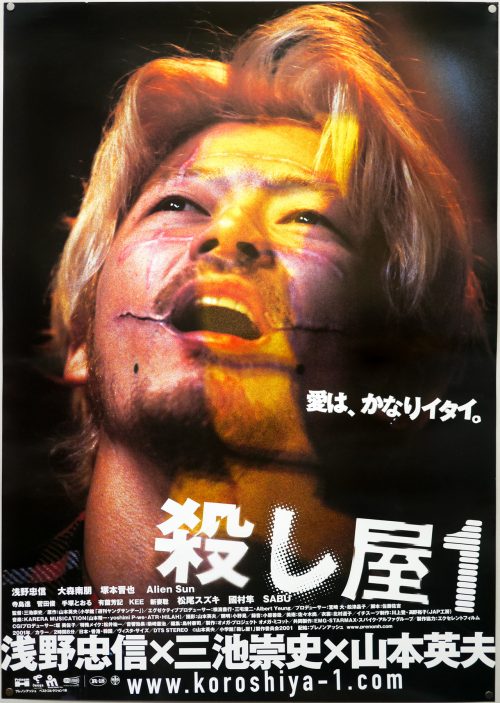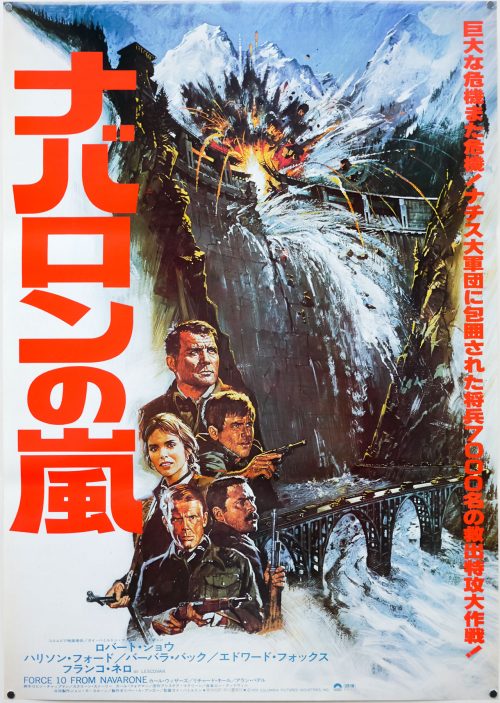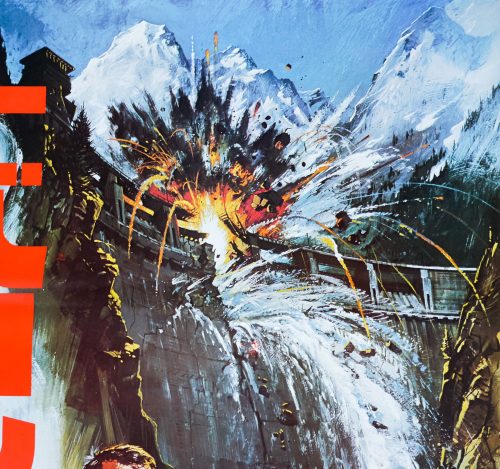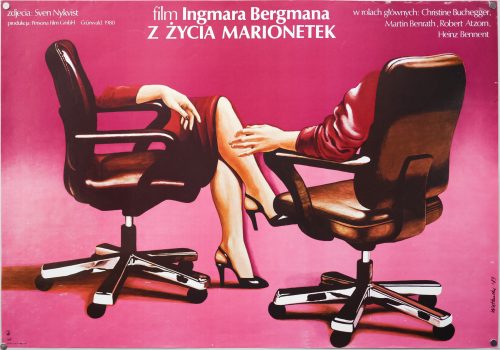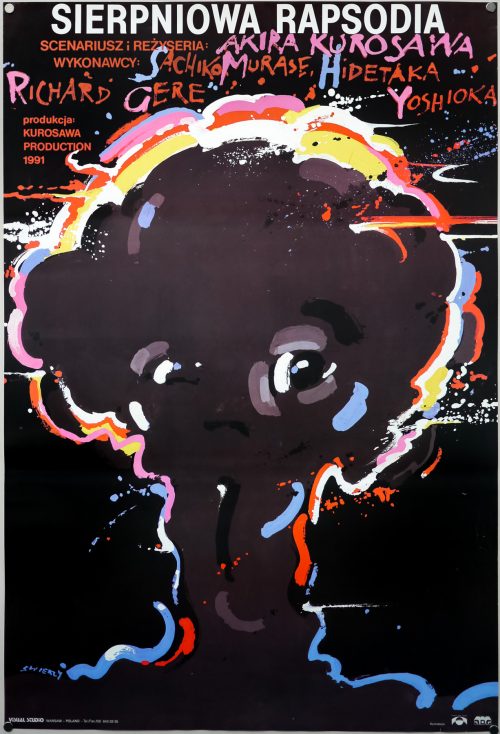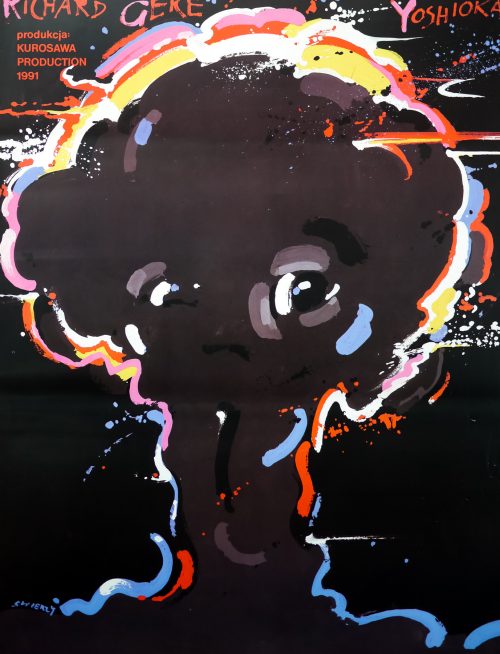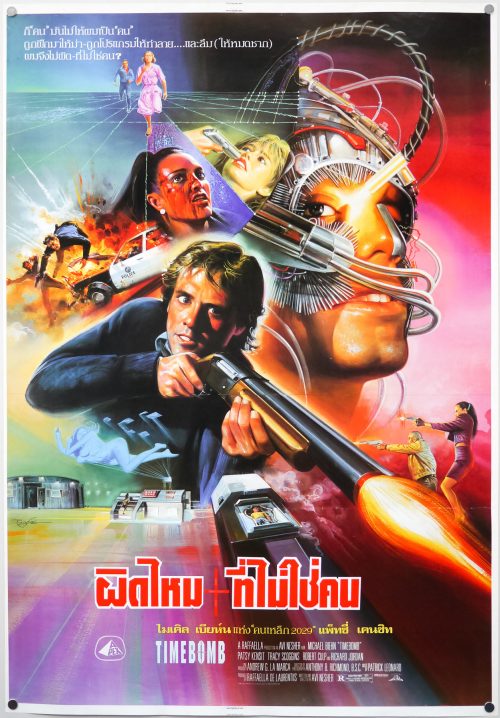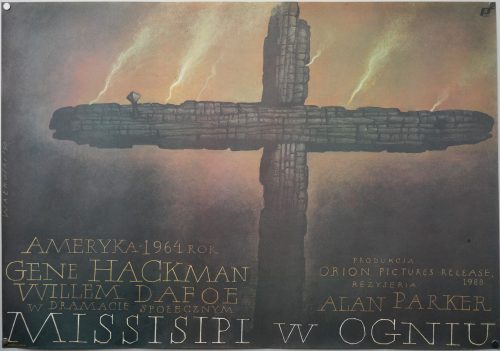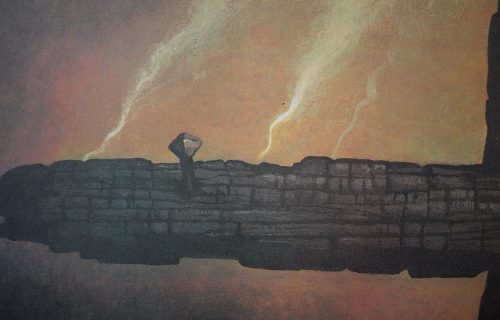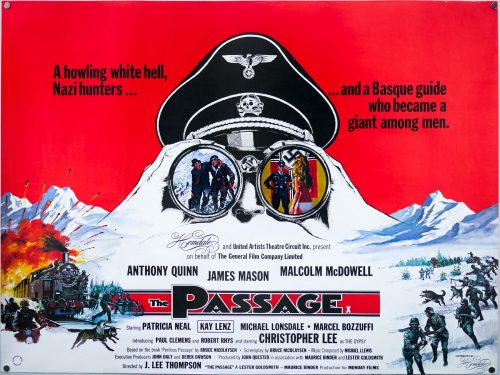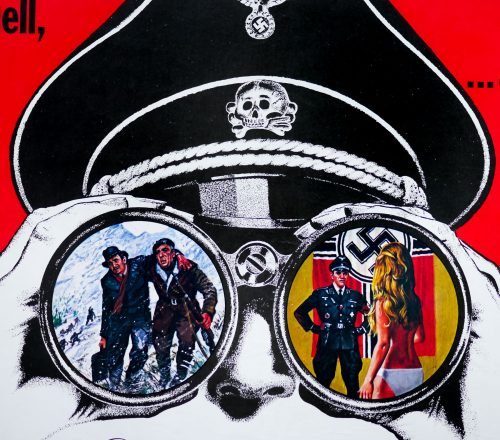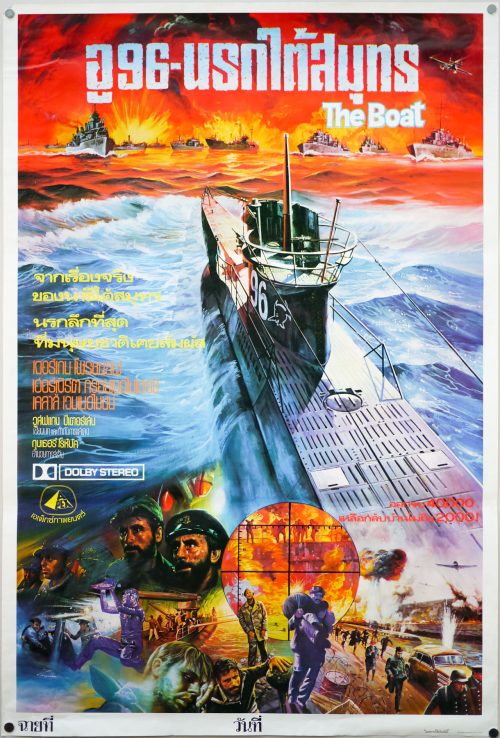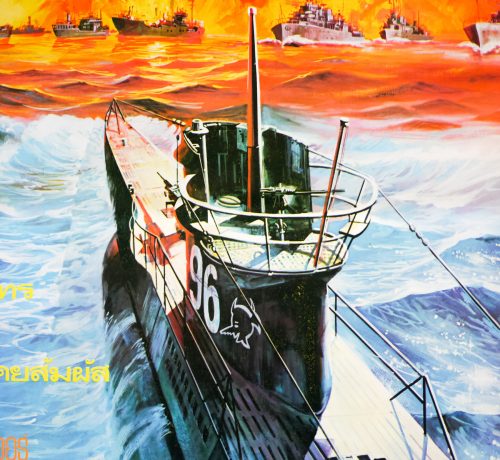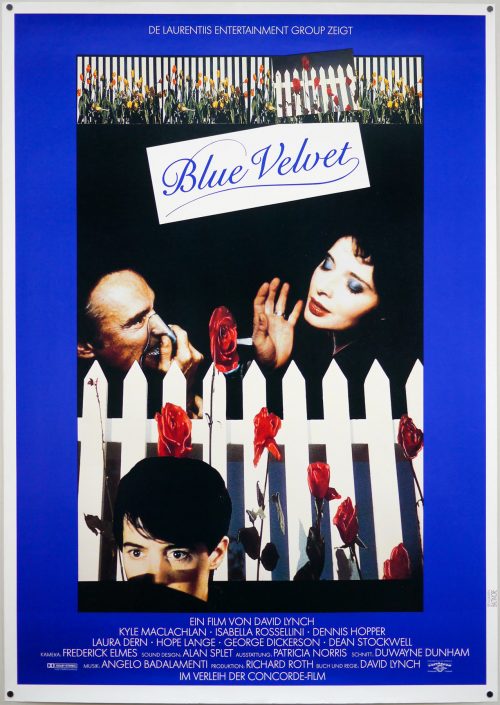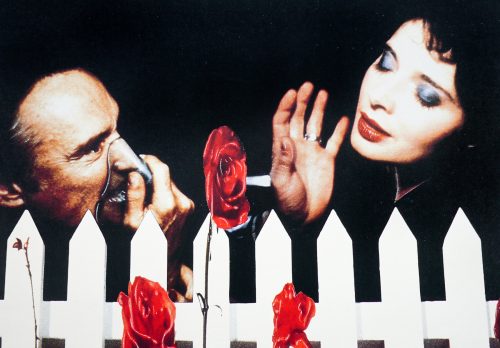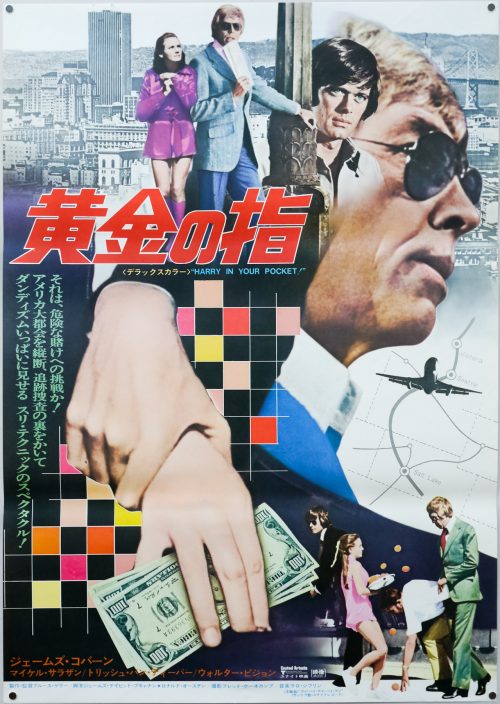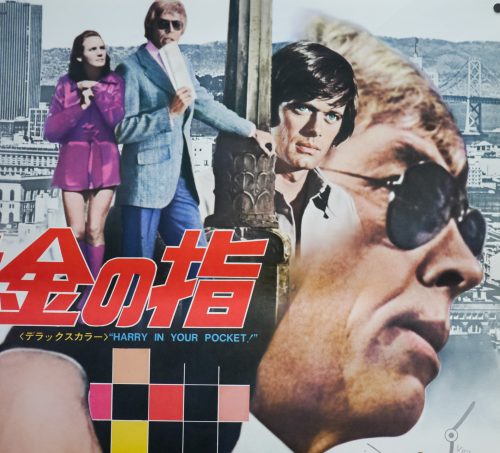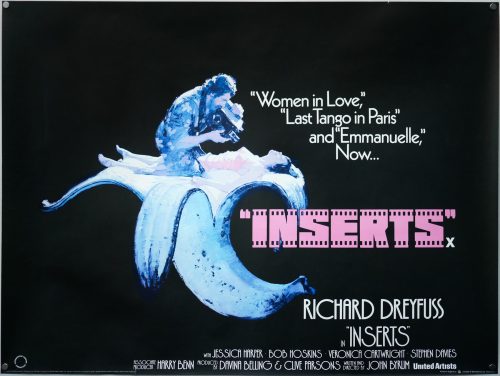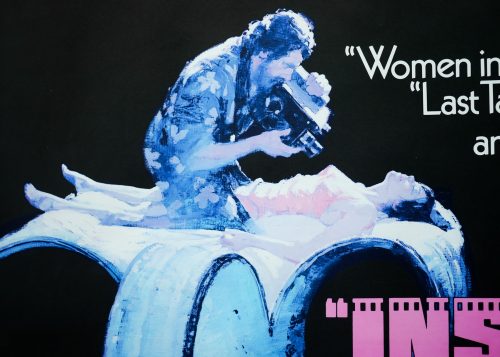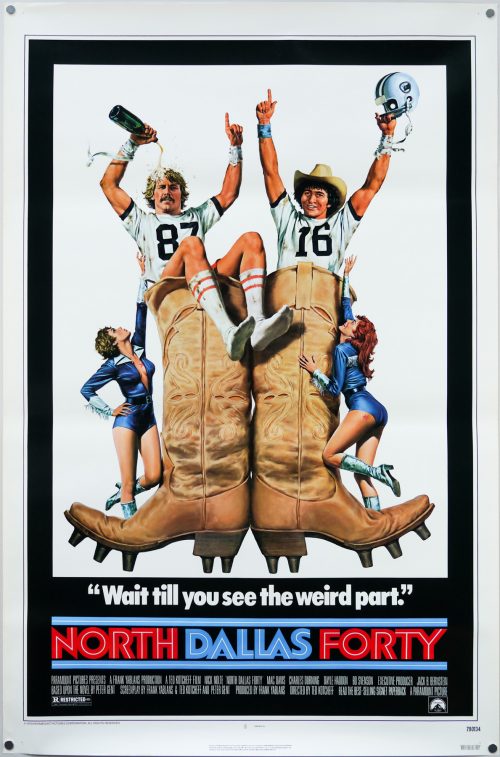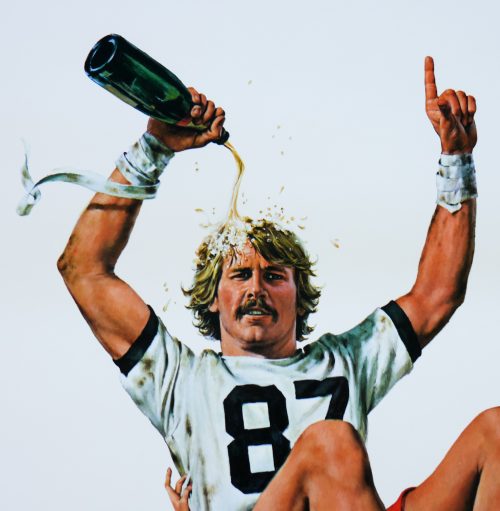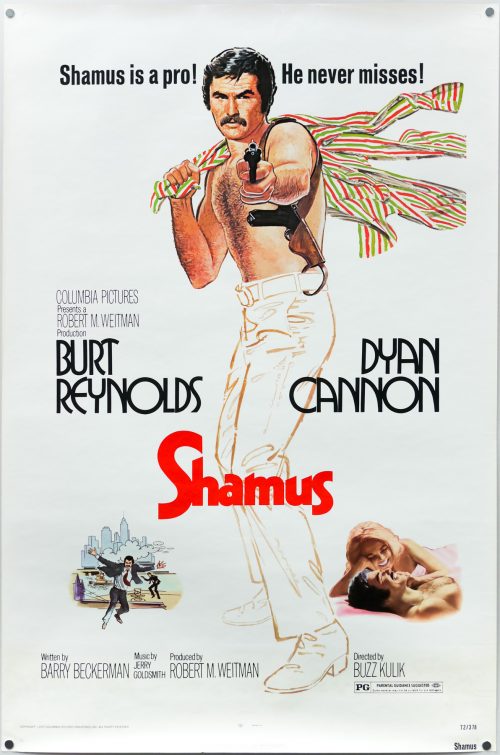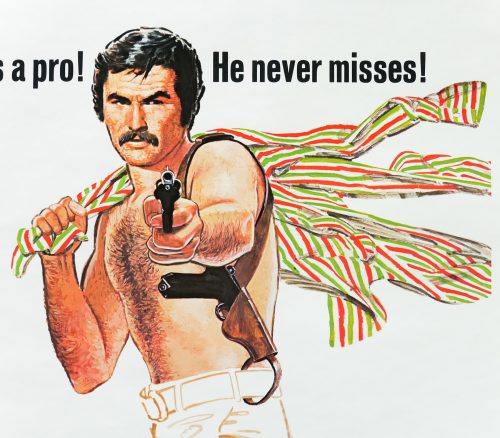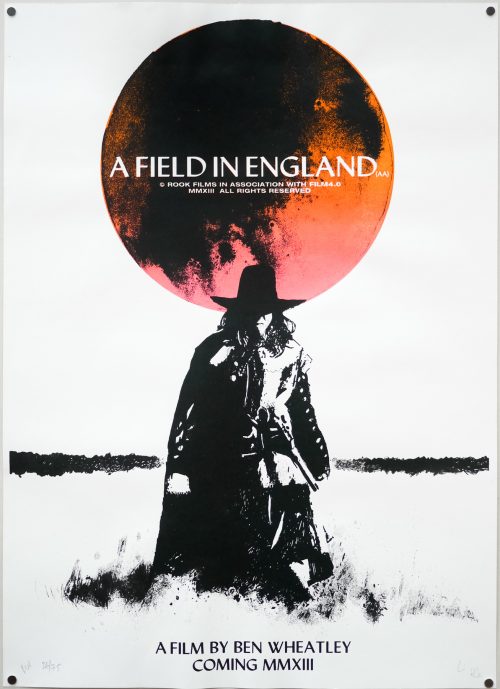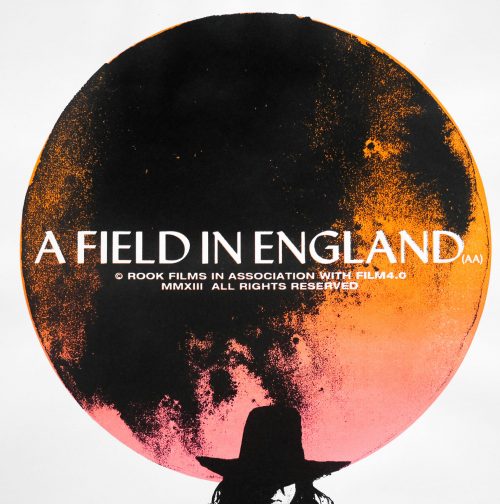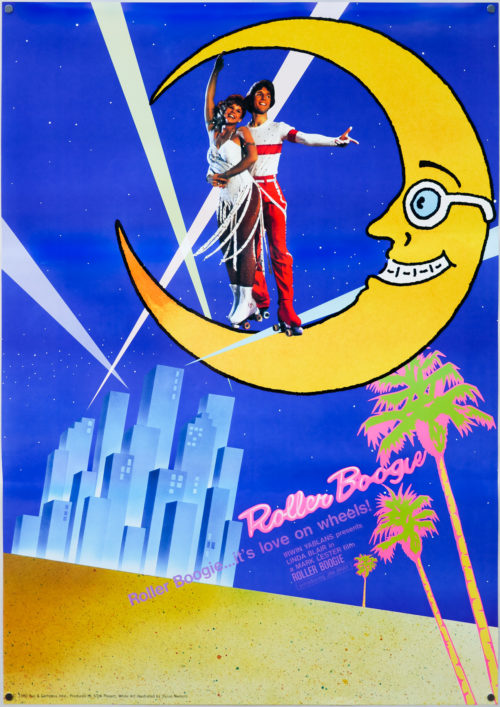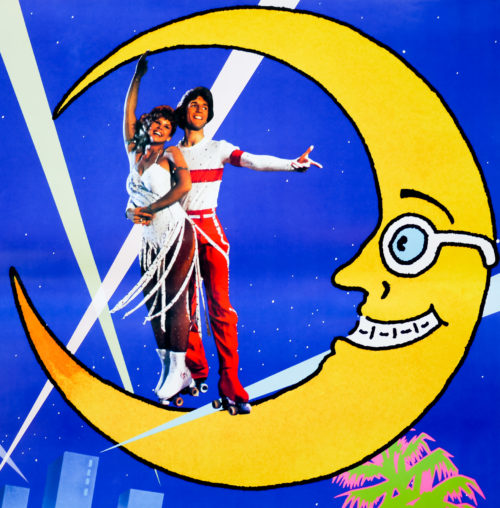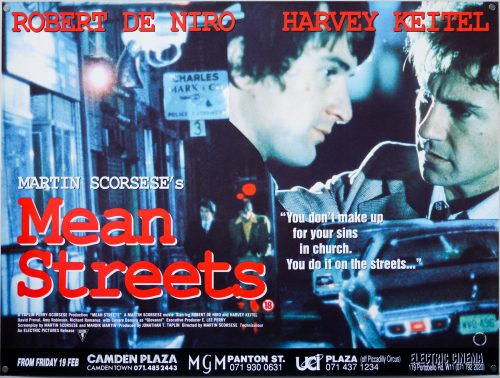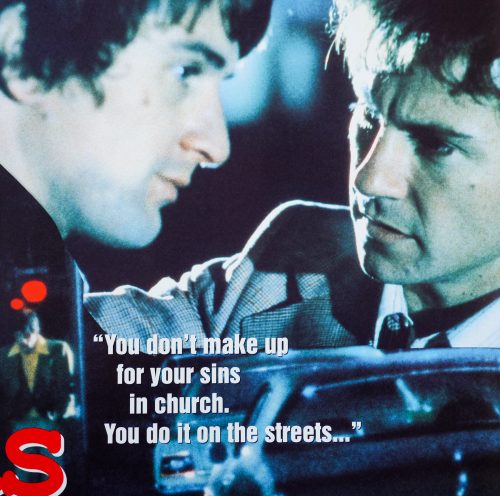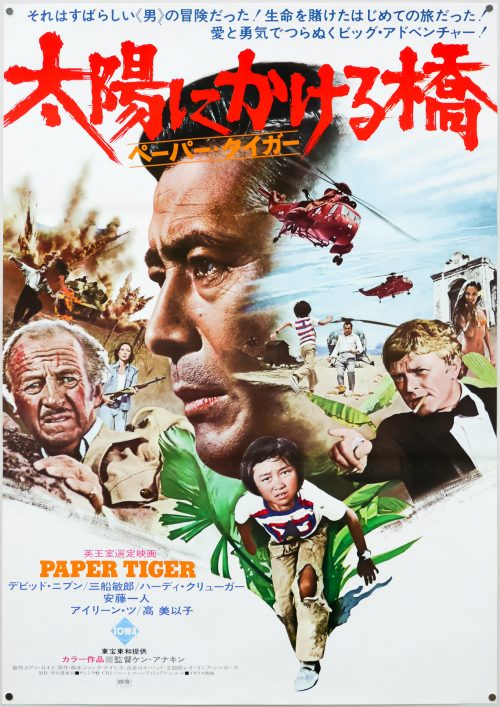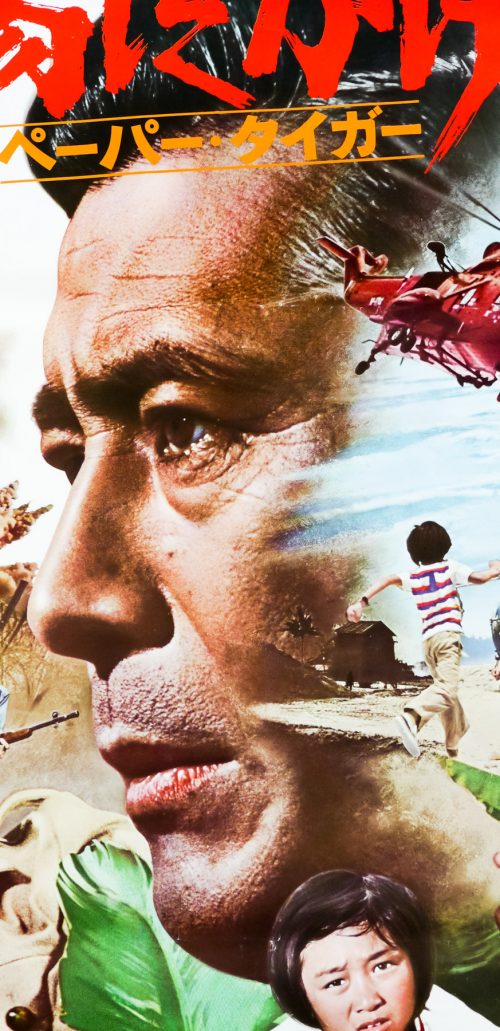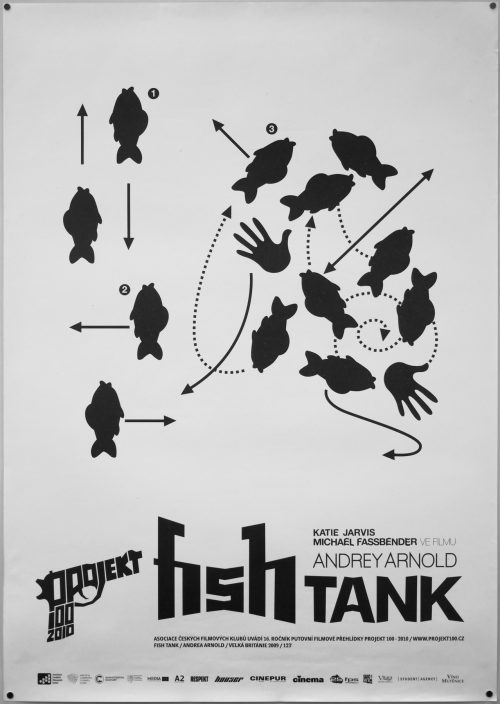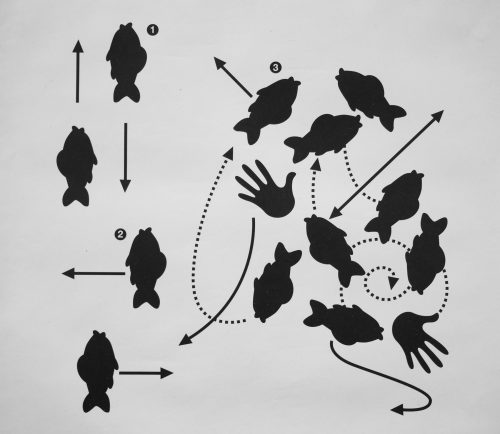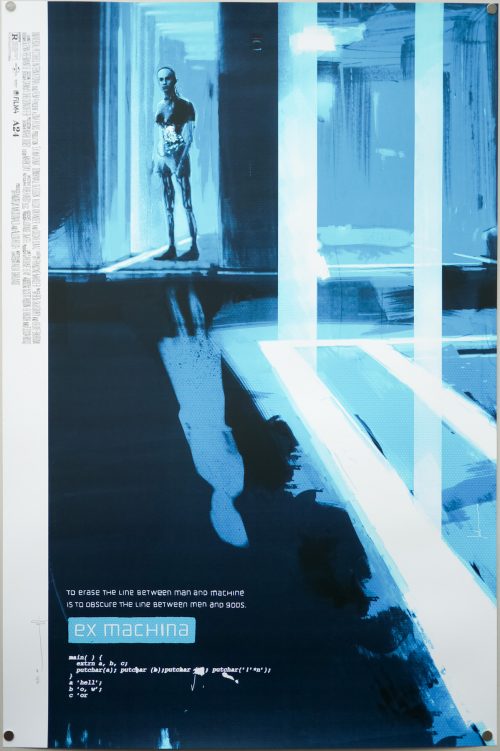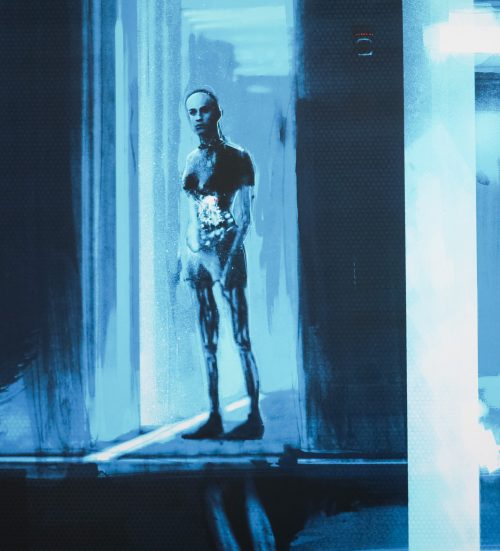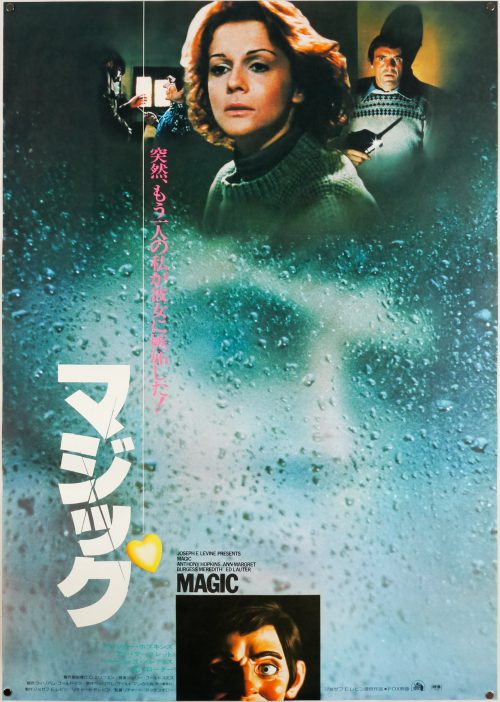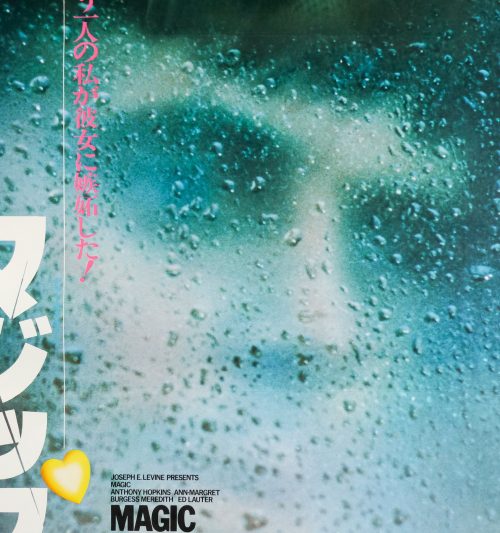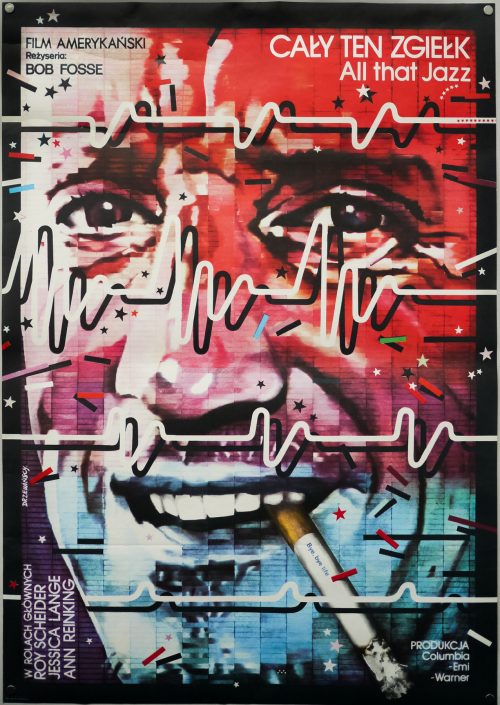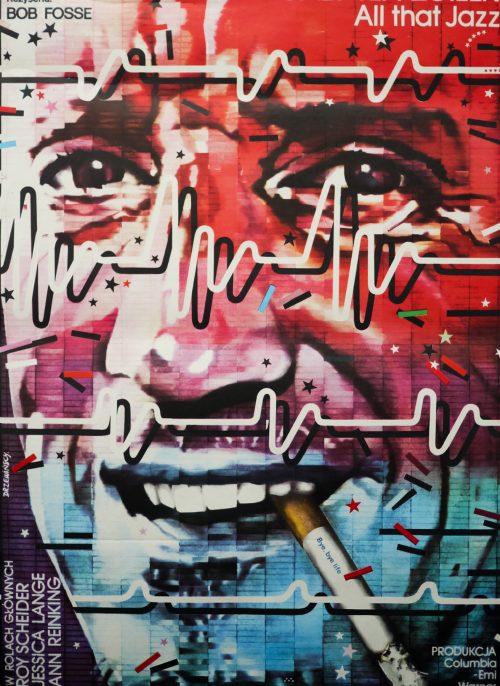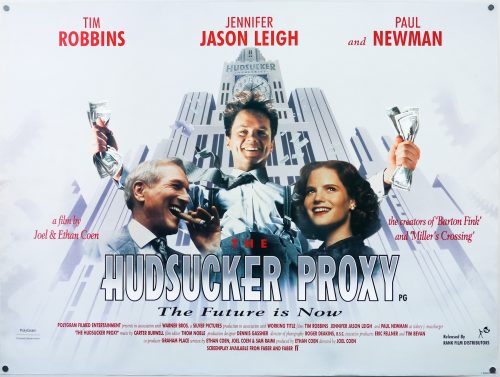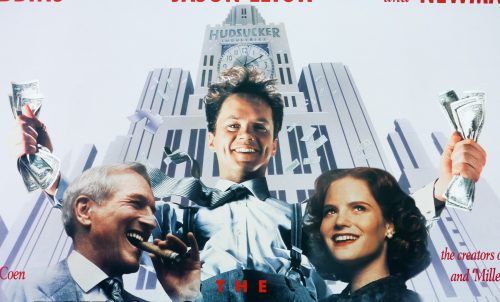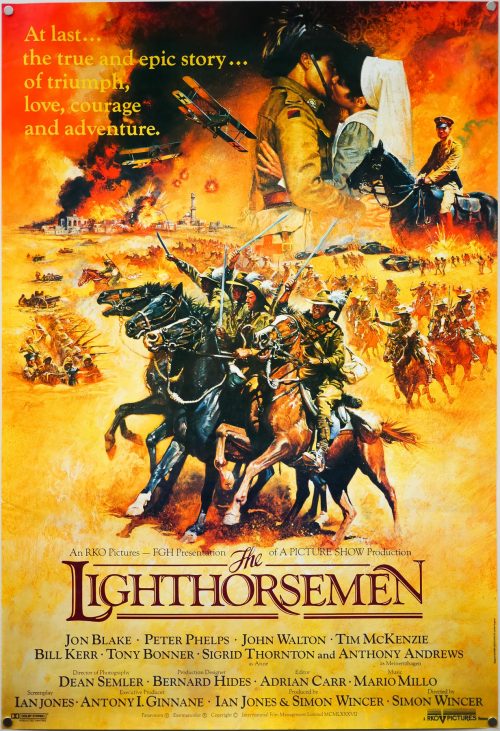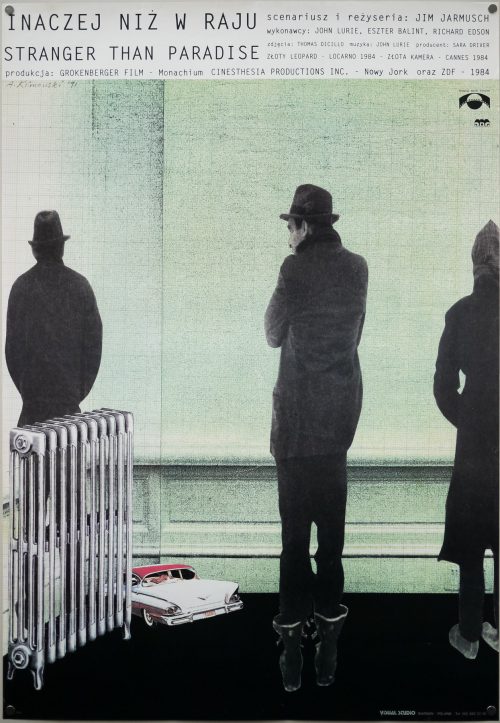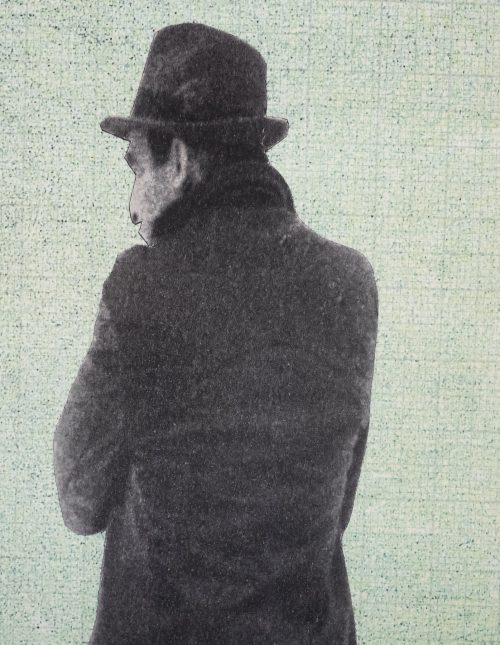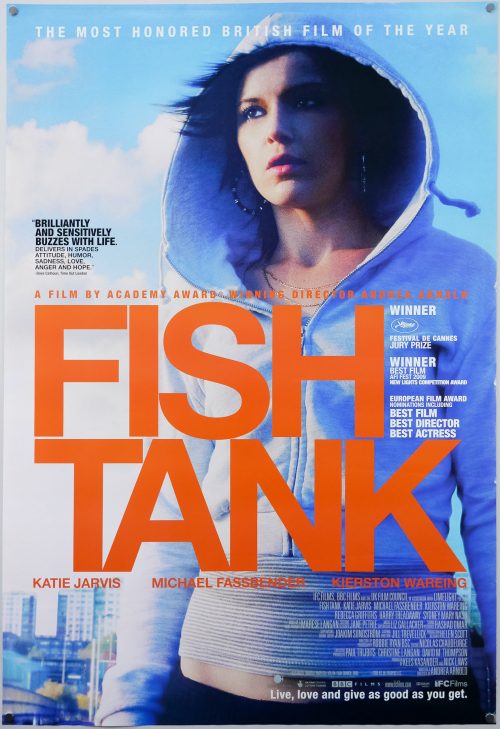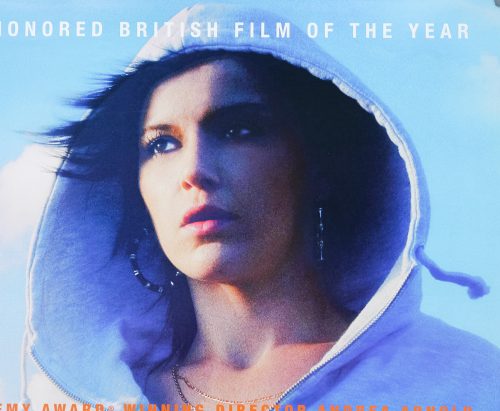- Title
- Ichi the Killer
- AKA
- Koroshiya 1 (Japan - English title - means 'Hitman')
- Year of Film
- 2001
- Director
- Takashi Miike
- Starring
- Tadanobu Asano, Nao Ômori, Shin'ya Tsukamoto, Paulyn Sun, Susumu Terajima, Shun Sugata, Toru Tezuka, Yoshiki Arizono, Kiyohiko Shibukawa
- Origin of Film
- Japan
- Genre(s) of Film
- Tadanobu Asano, Nao Ômori, Shin'ya Tsukamoto, Paulyn Sun, Susumu Terajima, Shun Sugata, Toru Tezuka, Yoshiki Arizono, Kiyohiko Shibukawa,
- Type of Poster
- B2
- Style of Poster
- Style A
- Origin of Poster
- Japan
- Year of Poster
- 2001
- Designer
- Unknown
- Artist
- --
- Size (inches)
- 20 6/16" x 28 13/16"
- SS or DS
- SS
- Tagline
- --
This is one of two styles of Japanese B2 posters printed for the release of director Takashi Miike‘s controversial 2001 film Ichi the Killer. A notably prolific director, Miike released 6 other films in the same year as Ichi alone, although it would be this one that would gain the most international notoriety. Based on the manga series of the same name by Hideo Yamamoto, the film focuses on the machinations of rival yakuza gangs within a crime syndicate and their interaction with Ichi (Nao Ômori), a shy and seemingly meek loner with a very dark side.
The film begins with the supposed disappearance of the gang boss Anjo, who vanishes from his apartment with millions of Yen, much to the confusion of his men. The audience sees the bloody aftermath of the fate that Anjo suffered at the hands of Ichi but a clean up crew led by Jijii (Shin’ya Tsukamoto) returns his apartment to a spotless state before his henchmen, led by the sadistic Kakihara (Tadanobu Asano) arrives.
The hunt for Anjo begins and Kakihara wastes no time in kidnapping a rival gang leader, Suzuki (Susumu Terajima) and hangs him from meat hooks to try and get him to confess. When it becomes clear he’s got the wrong culprit, Kakihara is forced to apologise and then cuts off his own tongue as a punishment. After being kicked out of the syndicate, the gang continues to hunt for Anjo. The audience learns that Jijii has been psychologically manipulating Ichi for years and has trained him in preparation to be used as a kind of weapon against whoever he decides to target. Suzuki has offered Jijii a large sum of money to take out Kakihara and his gang in revenge for their earlier attack and they must hunt for Ichi before he can get to them first.
It’s fair to say that, in true Miike style, the film doesn’t shy away from violence and sadistic torture and there are some truly brutal sequences. It’s not hard to see why it attracted controversy and was even banned outright in a few countries soon after its release. Despite some very ropey CGI there are several scenes that still shock today and Miike uses editing and sound design to great effect.
This poster, which I’ve named ‘Style A’ features the standout character of Kakihara (here with the number 1 seen on the back of Ichi’s killer’s outfit projected onto his face). The other style also features Kakihara but in a very different situation.
